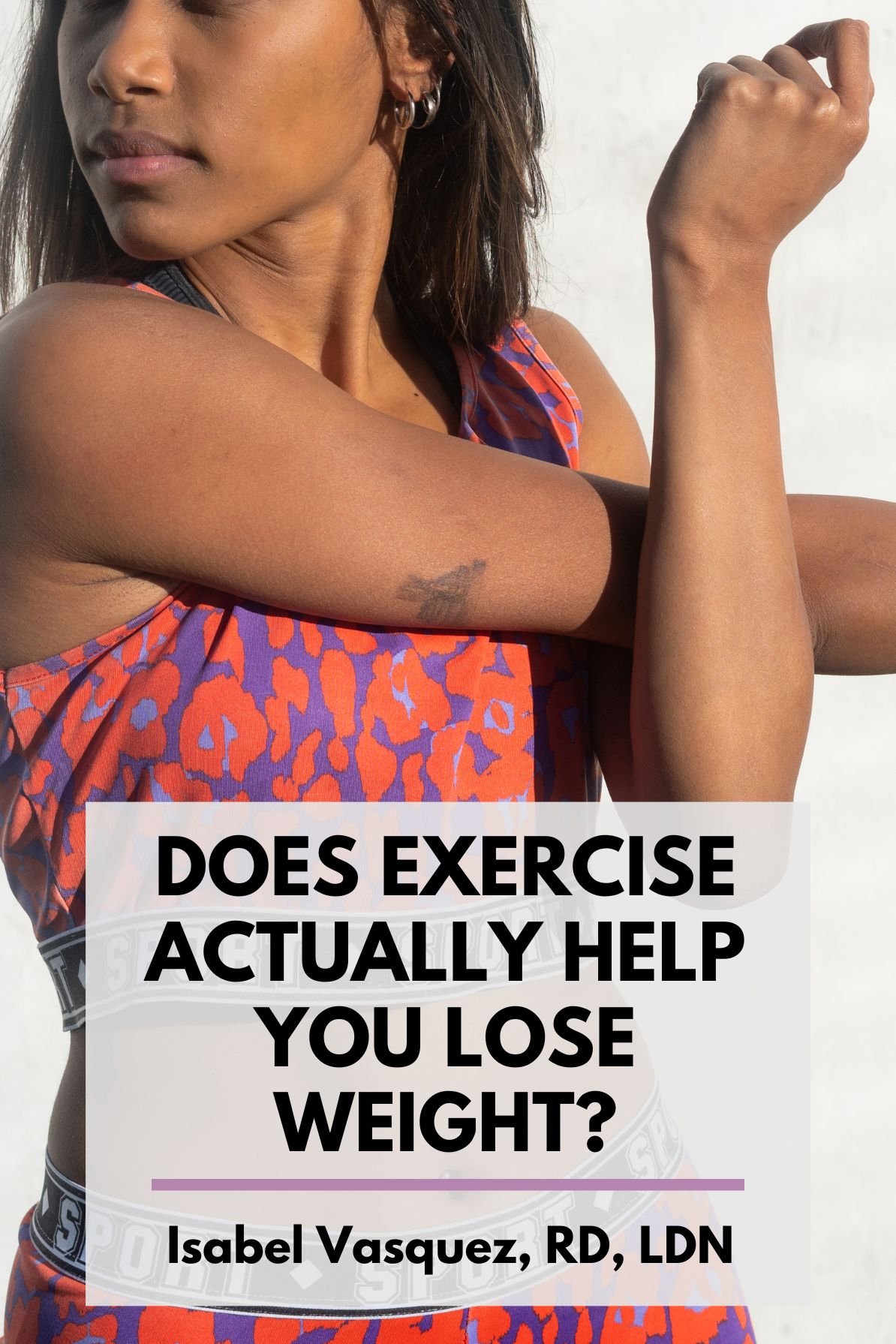Does Exercise Actually Help You Lose Weight?
Written by Isabel Vasquez RD, LDN
If you’ve dieted in the past, you’ve probably also used movement as a tool for weight loss. After all, diet culture influences not just our relationships with food, but our relationships with movement.
That being said, you probably referred to it as exercise, not movement. Exercise implies something more militant, rigid, and intense. That’s why we prefer referring to it as movement or activity. It allows more space for creativity, flexibility, and fun.
In this blog, we’ll discuss movement’s actual effect on weight, along with how to incorporate movement without diet culture!
Does Exercise Help You Lose Weight?
Despite working out often being used to promote weight loss, studies show it's not actually that effective at helping people lose a significant amount of weight.
Working out in line with typical recommendations (150 minutes of moderate intensity aerobic activity per week) doesn’t lead to meaningful weight loss, per a 2018 study in the journal Progress in Cardiovascular Diseases.
Another more recent study had participants undergo either a moderate‐intensity continuous training (MICT) program or a combined MICT with high‐intensity interval training (HIIT/MICT) program for 24 weeks.
Those who underwent the HIIT/MICT program did lose more weight than those who just did MICT, but on average, the weight loss was only 1.5–4% of the participants’ average body weight, which isn’t considered to be “clinically significant”.
Plus, the HIIT/MICT group had an 18% lower calorie intake, so we can’t even be sure it was the exercise itself that led to more weight loss.
Furthermore, it’s important to acknowledge that weight stigma in fitness facilities and lack of comfortable activewear for those in larger bodies could impact their level of activity.
So, associations between exercise and weight could partly be a reflection of these barriers, not just exercise’s direct effects on weight.
The Benefits of Movement
So if movement isn’t great for losing weight, is it still worth doing?
The answer is a resounding YES! In fact, here at Your Latina Nutrition, we don’t even promote weight loss since it’s not a controllable behavior and the pursuit of weight loss often leads to disordered eating behaviors.
Speaking of HAES, one principle of this framework is Life-Enhancing Movement.
Even without changing weight, movement has been shown to have a myriad of health benefits, and being active is a behavior that we do have control over. It’s something we can consciously incorporate in our days.
Some benefits of movement noted in the 4th Edition of Intuitive Eating are:
Increased bone strength
Increased heart and lung strength
Improved mood
Improved sleep
Decreased blood pressure
Reduced risk for chronic diseases like heart disease, diabetes, and hypertension
Improved cholesterol levels
Improved learning and memory
Furthermore, physical activity has been shown to improve satiety cues and appetite regulation, per a 2023 study in Biomolecules (CW: weight-stigmatizing language).
Yes, activity can help you connect more with your body’s hunger and fullness cues!
(Note that if you have a history of chronic restriction and over-exercising then this may be detrimental. A structured eating plan and a break in movement may be necessary to heal your body and strengthen your hunger/fullness cues.)
What’s the best way to incorporate movement in your life?
As you shift from a weight-centric to a weight-neutral approach to movement, you may wonder how to fit it into your life in a positive way.
You can certainly join fitness classes or hit the gym if that’s your thing, but you don’t have to in order to reap the benefits listed above.
The CDC and American College of Sports Medicine recommend engaging in a total of 150 minutes of moderate aerobic activity or 75 minutes of vigorous activity per week, and that can come in the form of less structured forms of movement like cleaning your house or playing with your kids.
In fact, studies—including a 2022 study in Nature Medicine—have shown that short bouts of movement throughout the day are extremely beneficial.
So, it doesn’t have to be an hour-long dedicated workout. Just carrying in groceries, walking up stairs, or running to catch a train can reduce risk for cancer, cardiovascular disease, and mortality.
As an added bonus, you’ll get the endorphin boost throughout the day to boost your mood!
That being said, if carving time out of your days for movement works for you, then that’s also a great way to get movement in.
The point is, it’s worth adapting your movement routine to your lifestyle and preferences. Short bouts throughout the day or dedicated movement sessions can both do wonders for your health.
Final Thoughts
Movement need not be harsh and punitive to be beneficial. In fact, that probably won’t be sustainable and definitely won’t be enjoyable.
Find forms of movement you enjoy. Be flexible about it. Get up throughout the day if you sit at a desk most of the day. Bring mindfulness into your movement. Use it as an opportunity to celebrate what your body can do and to connect with your body.
For education on how to ADD nutrition to your favorite Latine cultural dishes, make peace with food, and focus on your health without dieting, join our nutrition library for just $27/month.
If you liked this post, you may also like:
'I hate my body'. Why this happens and how to cope.

